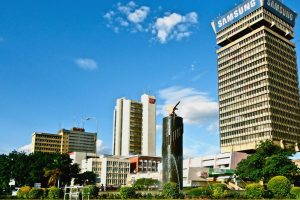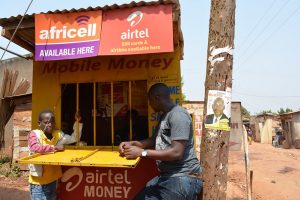Hemp has a wide range of industrial and medicinal uses. Its cultivation, processing, and distribution create job opportunities in various fields and lead to a country’s economic growth. Hemp farming in Africa has the potential to reduce the high levels of poverty. Hemp farming in Africa fo industrial and medicinal use is now legal in Rwanda, Malawi, Zambia, South Africa, Uganda, Zimbabwe, Ghana, and Lesotho. A number of countries in Africa are currently considering legalising the crop. This article is a guide on everything you need to know about hemp growing.
The UN Commission on Narcotic Drugs (CND) voted in December 2020 to remove marijuana from Schedule IV of the 1961 Single Convention on Narcotic Drugs where it was listed as one of the most dangerous drugs. The decision is expected to highlight the medicinal and therapeutic potential of marijuana as well as drive scientific research into marijuana.
Choose your Growing Area
You can choose to grow cannabis indoors or outdoors. Indoor grows are quite expensive, and you will need to invest in capital and time since the plants will need constant monitoring. On the other hand, outdoor growing does not require huge investment capital.
Choose the Right Cannabis Strains
Choosing quality cannabis cultivars will give quality yields. There are basically three strains (cultivars) of cannabis;
- Sativa. Sativa plants grow much taller than Indica with low to medium density buds. They take the longest time to grow, usually 5 to 8 months. Sativas also take in much light during their growth. Additionally, they have a lower THC content and are higher in CBD. Examples of sative include Malawi Gold, most Haze strains, Swazi Gold, and Durban Poison.
- Auto-flowering/Ruderalis. This is a strain type that auto-flowers. Plants are small to medium with low to high-density buds. They take the shortest time to grow, usually 3 to 5 months, and are mainly grown indoors.
- Indica. Indica strains give medium plants with medium to high bud density. Plants take 4 to 6 months to grow. They do well in both indoor and outdoor conditions. Indicas are high in THC and low in CBD. Examples include Grandaddy Purple, Northern lights, Afghani, and most Kush strains.
Cannabis Seeds
Following the decriminalization of cannabis, people are growing the plant for its many economic benefits. If you plan to grow cannabis, you can buy seeds from local seed banks, order online, or import from international brands. You will need to obtain special seed permits. Find out importation permits requirements in your country. In countries such as South Africa, you can buy from seed banks, which include;
- Green Smoke Room Seeds. It is one of the biggest cannabis seed brands in South Africa. Available cultivars are the Durban Poison, Super Silver Haze, Malawi Gold, Colombian Gold, and Swazi Gold.
- Sacred Seeds. Sacred seeds is a local seed bank that recommends Power Plant, Cheese, White Widow, Hindu Kush, and Frisian Dew.
- Marijuana Seeds SA. It is one of the most recognized cannabis seed banks in South Africa. It recommends White Rhino, Blue Dream, Amnesia Haze, and Northern Lights.
Hemp growers in the country can also buy hemp seeds at many pharmacies and animal feed shops.
Cannabis Clones
Farmers can choose clones over seeds to grow hemp. They save on time, and you have a guarantee that you are growing female hemp plants. You will also know the specific cannabis strain with clones since it has been cut from a specific known strain. It is not easy to get cannabis clones, as there is no known clone ordering online websites. However, you can ask for clones from indoor cannabis growers.
Before the cannabis plants start to root, it uses its leaves to absorb water. It is best to ensure the clone has access to enough humidity. Temperatures should be between 21°C – 26°C (72-77°F).
Hemp Planting Season
For outdoor grows, it is essential to consider the hemp planting dates since it contributes to the quality of hemp yields. Hemp grows well in long warm summers and day-lengths of between 14 to 16 hours. In South Africa, farmers prefer early planting of hemp, preferably between October and November (in the Eastern and Northern Cape), resulting in taller plants with higher fibre yields.
Cannabis Growth Stages
Cannabis consists of male, female, and hermaphrodite plants. The female plant’s ripe buds are used for recreational and medicinal purposes, while the male and hermaphrodite plants are important for their seeds and industrial uses. It is important to know the primary growth stages of cannabis; seedling, vegetative, and flowering. It is best to ensure that the plant is exposed to the right growing conditions for maximum growth.
At sexual maturity, it is important to check the farm for male plants and get rid of them to prevent pollination that triggers seed production in females, diminished flower set, and a reduction in CBD concentration.
Light Requirements
Hemp plants need an adequate supply of sunlight.
- Outdoor growing. If you decide to grow cannabis outdoors, make sure that the plants get 8 hours or more of direct sunlight per day. Insufficient sunlight leads to unhealthy plants.
- Indoor growing. If your plants are to grow well indoors, they must be subjected to a strict light cycle similar to the outdoor light. There are many indoor grow lights that you can choose from. Indoor cannabis growers use a timer to connect their grow light to.
Soils and Nutrition
Hemp can be grown on a wide range of soil types. However, the crop does well in deep, well-aerated soils with a pH of 6-7.5 and a regular water supply for optimal growth. Poorly drained soils are not suitable for growth as they retain excess surface water following heavy rains. This usually leads to crop damage as hemp is extremely sensitive to flooding. Hemp plants require fertile soils with the necessary nutrients to thrive. The soils should have high nitrogen levels, which the plant utilizes intensively in the first 6 to 8 weeks of growth.
Soil Preparation and Rainfall
A firm and fine seedbed are ideal for fast and uniform germination of hemp seeds. It is best to till the soil before planting hemp seeds between 2cm and 3cm deep. Additionally, it is advisable to plant the seeds directly into the soil rather than planting seeds in pots or nurseries for later transplanting. Hemp requires an abundance of organic matter (3.5%) for fast growth.
For outdoor growing, hemp requires a mild, temperate climate with an annual rainfall or irrigation of at least 500mm to 700mm, especially during the early stages of development.
Seeding Rate and Plant Spacing
Other factors to consider in hemp growing are the seeding rate and row spacing since they influence growth, biomass production, and fibre yields. Wider inter-row spacing and a low seeding rate produce large, branched plants that seed heavily. It is also essential to consider the time of seeding in hemp growing, and it should be determined by the weather and soil conditions rather than specific dates on the calendar. This means that as long as the soil conditions (temperature and moisture) are optimum, hemp can be seeded.
Weed Control and Rotation
Hemp is an efficient weed suppressor (it kills some weeds) that does not require chemicals to grow. The crop can be grown organically as it attracts fewer pests.
It can be planted on the same piece of land continuously for several years. However, it responds well when rotated with crops such as wheat, beans, and lucerne.
Hemp Harvesting
Given ideal soil conditions and climate, hemp can mature in up to 4 months. The harvesting method is determined by the use to which hemp will be put. If the hemp will be harvested for seed, it is mostly cut by hand, but it can also be harvested mechanically, especially if it will be used for textile applications.
Final Thoughts
With the decriminalization of hemp in several African countries, farmers are joining the hemp growing sector to reap from its many benefits. With the required licenses and permits where necessary, this guide will help farmers grow high-quality hemp.
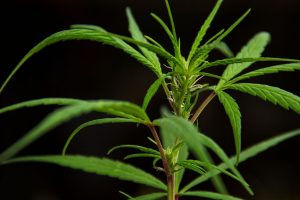
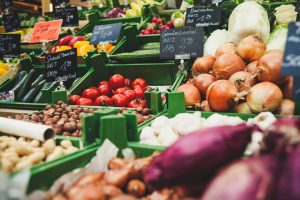

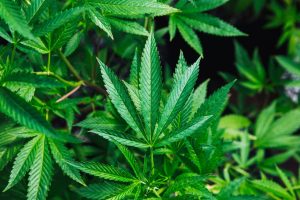
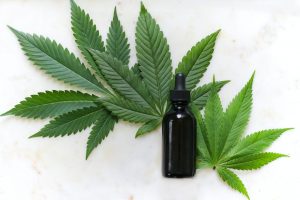
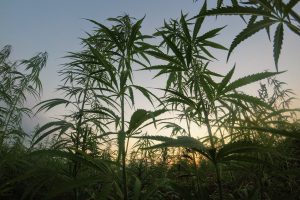
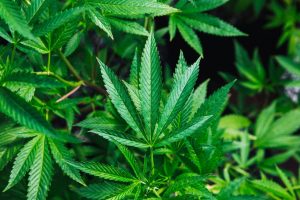

![Starting a Lucrative Hemp Farming Business in Zambia [Interview]](https://businessideas4africa.com/wp-content/uploads/2020/10/pgc9vid8o24-scaled-300x200.jpg)

![How to Patent an Idea [Kenya, Tanzania, Ghana, Nigeria, South Africa, Zambia]](https://businessideas4africa.com/wp-content/uploads/2020/11/patent-300x200.jpg)
